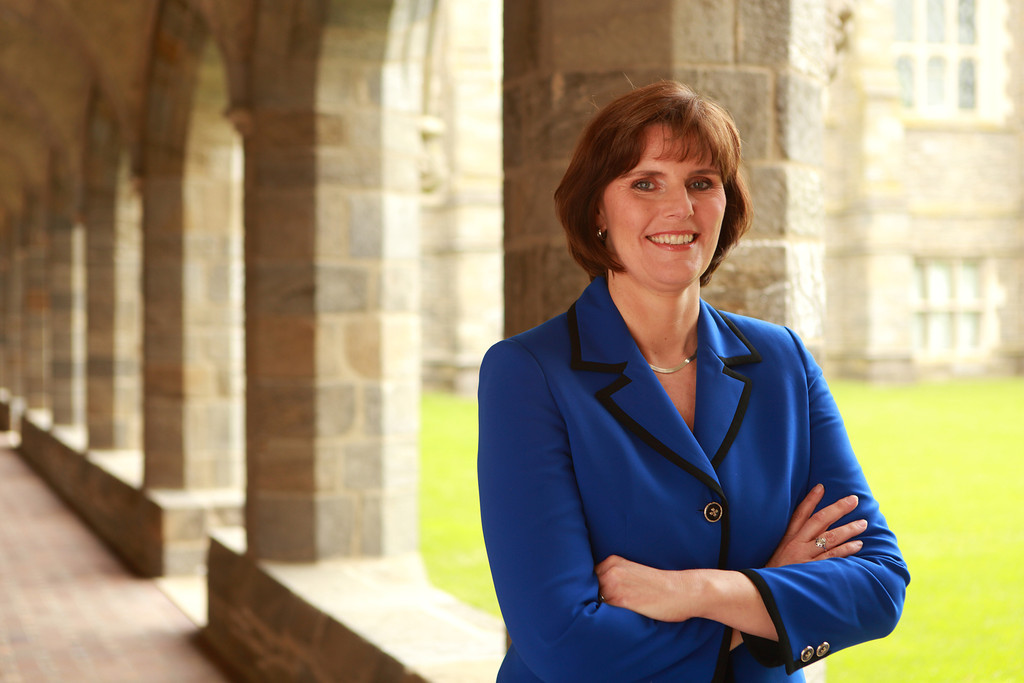BRYN MAWR COLLEGE WORKS TO CHANGE THE CLASSROOM EXPERIENCE
By Emilia Otte
In the high-tech atmosphere of today’s universities, the chalkboard still has a place.
Even with the rise of its fiercest competitor to date, MOOCs (Massive Open Online Courses), studies continue to show that face-to-face learning is more effective than online instruction.
However, educators are realizing that there is no reason why they can’t bring the rivaling models together for the overall good of higher education. This combination of a traditional classroom with online materials creates “blended learning”.
After blended learning had some success at large universities, administrators at Bryn Mawr College, a small liberal arts women’s college in Pennsylvania, wondered if the system could apply equally well to an institution like theirs.
In the 2011-2012 school year, Bryn Mawr received a $250,000 grant from the NGLC (Next Generation Learning Challenges). In fall of 2011, the faculty launched 18 blended introductory STEM (science, technology, engineering, and math) courses. Students in lower-level biology, chemistry, and geology courses took online quizzes, watched online tutorials, and practiced basic math skills needed for the class. Professors did not have to reduce time spent in the classroom- and none of them did.
At the end of the semester, 93.5 percent of the students in the blended courses earned a merit grade (2.0 or better), versus 83 percent of students in traditional STEM classes. The average grades for the biology, chemistry, and geology courses were significantly higher than they had been in the past.
The next year, liberal arts colleges across the country developed blended courses on their own campuses. Macalester College used computer-based games and experiments for an introductory economics course. Oberlin College incorporated Skype sessions into one of its Spanish classes. A professor at Lafayette College “flipped” an introductory statistics class -students watched the lectures online and used class time to work through problem sets.
In total, according to the NGLC study’s official website, 25 small liberal arts colleges created over 40 blended learning courses for the 2012-2013 school year. None of the Bryn Mawr professors teaching the original 18 courses stopped using blended methods. This more than doubled the total number of blended courses offered at liberal arts colleges in a single year, and the trend continues to spread in small colleges across the United States.
Blended learning improves the connection between students and professors. Professors are able to see where students are struggling at any point in time. They can then use class time to clarify specific material rather than reviewing blindly. Dr. Jennifer Skirkanich, an introductory biology lab professor, uses “check-ins”- small, credit-only online quizzes – to determine exactly what she needs to focus on in the next class. Skirkanich says the system is “A win-win situation. For me, personally, it helps tremendously to see where the students are going wrong.” For the students, she says, “It’s a really easy thing to do, really quick…and no stakes.”
According to Jennifer Spohrer, coordinator of the study, 75 percent of students taking blended courses found the computer-based materials at least “somewhat helpful”. Students liked having instant feedback on their work. They felt relief in being able to make mistakes in a way that would not affect their grade. And they liked having online summaries, videos, and additional practice problems that they could use at their leisure.
About half the students chose to make use of the extra materials, either to prepare for a lesson or go over an earlier one, and the choice brought unexpected consequences. When the students discovered that their professors could see how much they used the online tools, Spohrer says, reactions were mixed. The students doing extra work were excited. The students doing only the bare minimum, on the other hand, were “horrified.”
According to Kim Cassidy, President of Bryn Mawr College, the school intends to continue its experiments in blended learning. In particular, the college will be exploring blended learning opportunities for the humanities and social science courses. The school will also look into creating online materials for higher-level courses.
However, cost is a huge barrier. Mass-market online materials are expensive, and they do not always agree with a professor’s teaching style. Having professors write their own materials allows for greater flexibility, but the process is time-consuming and costly. As a result, liberal arts colleges are working together to create introductory course materials that are both more affordable and easy to work with than the standard commercial ones. Cassidy says this would have “a lot of impact for what would be a pretty substantial investment.”
Cassidy has already adopted blended techniques for her own classroom. She uses technology where it is applicable, for instance, to show her psychology students how to search for journal articles or write citations. However, she spends much more time lecturing face-to-face. “We didn’t adopt blended learning because we felt we should use technology.” Cassidy said. “We adopted blended learning because the data suggested it was helping students learn better, and that’s what we fundamentally care about.”

